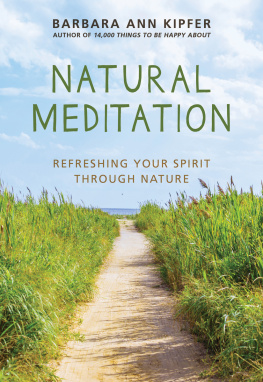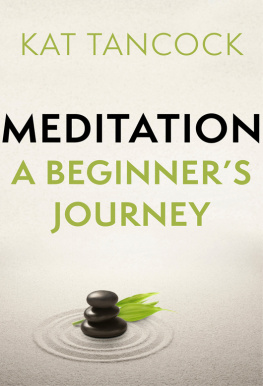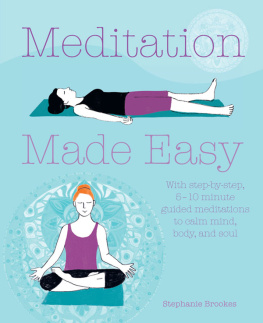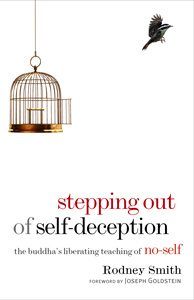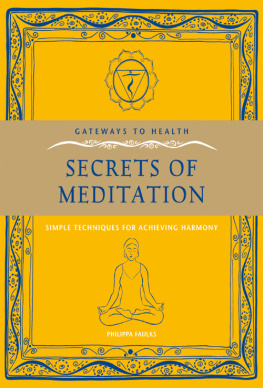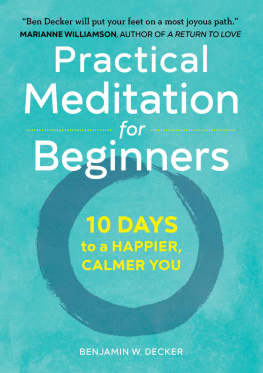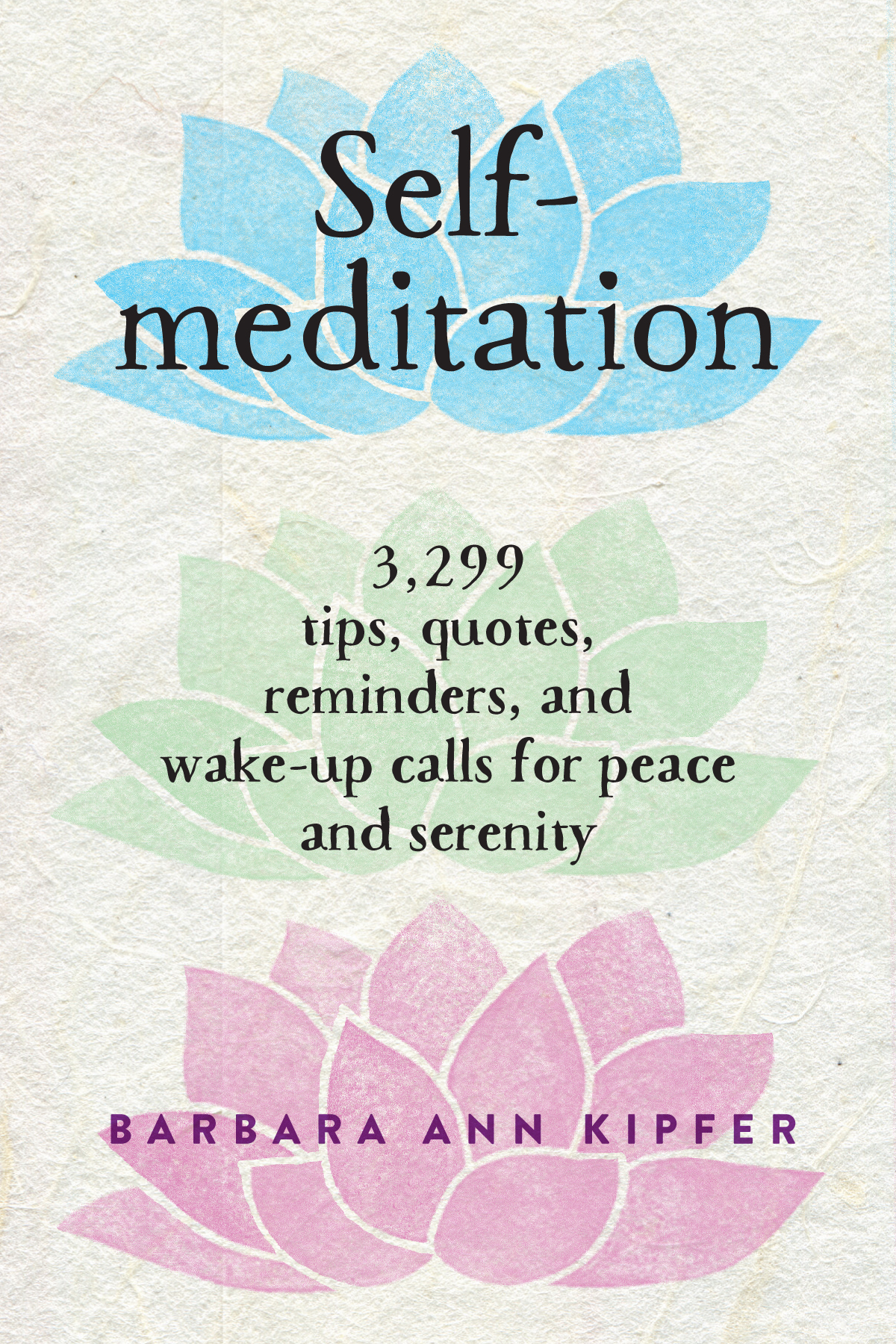
welcome
I was drawn to Buddhist studies and meditation by the theme of happiness that I found in so many of the books on the topic. The evidence of the positive effect of meditation on well-being is becoming quite impressive. Regular meditators have reduced levels of negative emotions, and mindfulness training and meditation have been shown to reduce stress, improve immune responses, and increase overall mental and physical health.
In general, meditation techniques teach people to become aware of the contents of their consciousnesses but at the same time to detach themselves from them. Thoughts can be seen in context for what they arejust thoughts. This increase in awareness can make an incredible difference in your life.
Self-Meditation is all about learning to listen to ourselves, be in the present moment, and not get caught up by attachment, aversion, fear, and suffering. These things are part of life, but by meditating you can find ways to notice them but not let them overwhelm you. Meditation teaches you to be mindful and honest, which makes your mind quieter and more open, your heart happier and more peaceful.
Namaste,
Barbara Ann Kipfer
Wake up!
H ere you are, ready to self-meditate, and this section offers some simple guidelines and information for your practice.
Meditation Checklist
Gather together
regular time slot and amount of time
quiet or peaceful place for your meditation
meditation cushion, bench, or favorite chair
distractions turned off (telephone and screens)
comfortable attire
comfortable sitting position
meditation technique
desire to meditate and diligence
a smile
Options to consider
stretching before sitting (yoga poses, Pilates, regular stretches)
blanket, shawl, or sweater if you tend to feel chilled
personalization objects or altar for the area
Creating a meditation space
It is great to have a regular spot (or maybe two) for meditation. The space should be quiet, pleasant, clean, naturally lit, and simplean oasis from lifes hustle and bustle. There will always be some noise, but do the best you can to find a quiet spot. Make a comfortable seat by choosing a cushion, bench, or favorite chair.
Choosing when to meditate
The best time to meditate depends upon your constitution and when you are alert and freshnot worn out or overstimulated. Consider: first thing in the morning, before bed, right after work, lunch hour or coffee break, waiting periods, or other predictably idle times.
Choosing how long to meditate
Short, regular sessions are better than infrequent longer sessions. You can start slowly (five minutes) and work up to twenty to sixty minutes. Remember not to pressure yourself, to meditate for the length of time that makes sense within your lifestyle. The most important thing is to practice regularly.
Positions for meditation
The position in which you sit or kneel should be comfortable. Your back should be straight, with the vertebrae stacked like blocks and your head being pulled up by an invisible string. Be a mountain or a tree. Your hands should be in a position that feels natural or is meaningful to you. Your eyes can be closed or half closed.
Focusing on the breath
The breath is always available and always simple, making it the best anchor for meditation. Focusing on the breath calms the mind and provides the stability necessary to cultivate concentration. You will be studying the nuances of your breathing and how it changesand it will teach you awareness of the present moment.
Working with sounds
When sounds become dominant and call your attention away from breathing, focus all your awareness on the experience of the sound. Make a soft mental note of hearing, but do not specifically call it car or clock or another concept. Attend to the sound, then let it go and return to the breath.
Working with sensations
When sensations in the body become dominant and call your attention away from breathing, focus all your mindfulness and attention on the sensation. Make a soft mental note of sensation or feeling or ache or pain. Attend to the sensation, then let it go and return to the breath.
Working with thoughts and images
As soon as you become aware of thoughts or images arising in the mind, make a soft mental note of thinking or wandering or seeing. Notice when you become aware of the thought or imagewithout judgment. Be mindful of where your mind has gone, then let the thoughts or images go and return to the breath.
Working with hindrances
When different mental states or emotions arise, especially the hindrances of desire, aversion, sleepiness, restlessness, and doubt, make note of them. As soon as you become aware of one of these, make a soft mental note. Do not get lost in the emotion. Observe it, then let it go and return to the breath.
Meditation Tips
Make sure your meditation space is well ventilated. An overheated or stuffy area will contribute to drowsiness. In nice weather, you may want to meditate outside in a peaceful spot.
Tell others: Do not disturb during meditation! Seriously.
It is a good idea to vary leg positions from one sitting to the next, especially as you are adjusting to sitting and developing your flexibility.
Set a timer or use a meditation timer app or website. Peek at a clock after some time has passed and only when you do not have a timer available.
Take three deep breaths to start your meditation.
Relax your jaw and rest your tongue on the roof or bottom of your mouth.
Breathe through your nose during meditation.
To develop concentration, you can count your breaths, or note in/out or rise/fall to calm and train the mind. If you lose count or track, simply start again.
If you are sleepy or restless, try walking meditation.
Hindrances are guaranteed to come up. Accept this, observe them mindfully, then return to focusing on the breath. Think of this like bringing a puppy back to the newspaper to train it.
Trust in your efforts to meditate. Do not waste time doubting or analyzing your practice, your progress. Let go of expectations for results and just meditate!
Keep meditating, day after day. Keep coming back to the breath, time after time. When you practice meditation, you develop mental muscles like awareness, concentration, and mindfulness. Many people exercise their physical body regularlyand meditation is the equivalent for your mind.
At the end of your meditation, open your eyes gently and take three deep breaths to readjust.
Dedicate the efforts of your meditation to benefit others. Try to carry the momentum of your mindfulness into whatever your next activity may be.
Meditative Life
Drop any expectations but do take note of your intentions. Intention is the mental factor that directly precedes an action or movement. Meditation will help you become aware of your intention before you do or say something. Mindfulness of intention helps you live a life where you respond consciously instead of react.
Reflect on impermanence and change in life. This will help you appreciate lifes preciousness.
Realize the limitations of success and stuff and wealth. Nothing outside of yourself gives you happiness.
Practice not being attached. Let go of constant desire, grasping, and greed. Let go of constant aversion, dislike, and hate.
Simplify your life.
Cultivate patience, diligence, and perseverance.
Next page


